Outdoor Events strives to set a new standard of excellence for the promotional product marketplace. After making countless holiday meals for family gatherings and cupcakes for the office, you finally decided to start your own catering business. While it is extremely rewarding to run your own business, it is also just as challenging. Unless you specialize in a particular cuisine or service, catering can feel as if you are setting up and tearing down a new restaurant every single day. With an array of clients who want different types of foods and services, running a catering business can be extremely demanding and hectic.
Among all of the chaos, it is easy to forget the little things such as having a hand washing station or keeping the hot food above 140 degrees Fahrenheit at all times. In the catering business, it is the little things that matter. Here are some safety tips to keep in mind.
Health and Safety
Since you’re handling food and catering to a large amount of consumers, safety and cleanliness is significantly regulated. Your local health department will visit frequently, inspecting not only food, cooked and uncooked, but also the refrigeration systems, waste disposal, fryers and everything else in between.
What to Expect
First things first, figure out what your clients have in mind and what services you can actually deliver. Then follow the safety regulations. Food is made before the event at the caterer’s establishment or is made at an onsite kitchen.
Preparing the Food
If you are preparing food at the client’s home, clear the confusion by lining out specificities such as who will purchase the raw food? Where will the food be purchased? Where will food be stored? If you are preparing food at your own establishment, make sure that your kitchen is not only clean enough for inspectors, but for prospective clients, as well. There should be areas for handling raw products and a separate area for food that is ready to eat.
Transporting the Food
If you are preparing food at your own location, you need to transport the food in an insulated food carrier. It is crucial for food carriers to keep track of the temperatures the food is transported and stored at.
Hot and Cold Food
Hot food needs to stay hot and cold food needs to be kept cold. That means, that the hot food should be at 140 degrees Fahrenheit at all times and cold food must be kept below 40 degrees. No exceptions. This is for the safety of your customers.
Reheating Food
If you are reheating the food, the FDA Food Code specifies that the food must first reach an internal temperature of 165 degrees Fahrenheit for 15 seconds. Food must also be kept at its appropriate temperatures for two hours. Anything after the two hour limit must be throw away.
Ice and Beverages
Also, keep in mind to separate the ice that is used to keep foods cold and ice that is put in beverages. Ice that is used for cooling food usually comes into contact with bacteria and other contaminants.
Outdoor Events
Catering outdoors comes with an array of challenges. Often times there are no onsite kitchens and a clear lack of a closed space. Keep bugs, vermin, wind and bacteria away by covering all of the displayed food. Also, throw away all of the waste in a closed container. If it is possible, set up tables underneath tents.
Hand and Dish Washing
Catering is a mobile profession. This means that you’re not always going to know if your venue will have a sink and a dishwasher. If you are catering at an outdoor area, make sure that you can bring a portable hand sink or set up some kind of hand washing where your employees can wash their hands. Also, double check with your client that their venue will have dish washing equipment available so that you can easily clean surfaces and utensils at all times during the event. Picnic catering Perth has the perfect place that will recommend to you.
